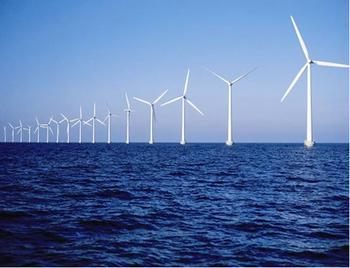 In China, offshore wind power or land resources are scarce in the provinces, offshore wind power is also a concern, and with the rapid development of high-power fan domestic technology has become a hot spot. Offshore wind power not only meets the trend of international energy development, but also will be the focus of future development of wind power in China. Offshore wind farms have become an investment focus of new energy development in Europe and America because they have the advantages of not occupying land resources on land, being more filial to the environment, being closer to the load center, and being more stable in wind speed. However, compared with land-based transmission lines, offshore lines connecting offshore wind farms and onshore power grids have the characteristics of higher initial investment, higher operation and maintenance costs, greater difficulty in construction and longer construction period, and require investment, technology, and institutional follow-up. Reduce construction and operating costs to better match offshore wind farm construction.
In China, offshore wind power or land resources are scarce in the provinces, offshore wind power is also a concern, and with the rapid development of high-power fan domestic technology has become a hot spot. Offshore wind power not only meets the trend of international energy development, but also will be the focus of future development of wind power in China. Offshore wind farms have become an investment focus of new energy development in Europe and America because they have the advantages of not occupying land resources on land, being more filial to the environment, being closer to the load center, and being more stable in wind speed. However, compared with land-based transmission lines, offshore lines connecting offshore wind farms and onshore power grids have the characteristics of higher initial investment, higher operation and maintenance costs, greater difficulty in construction and longer construction period, and require investment, technology, and institutional follow-up. Reduce construction and operating costs to better match offshore wind farm construction. At present, different countries have taken different measures based on their national conditions. There are three main modes: First, the existing onshore power grid companies are responsible for the construction and operation of the offshore transmission lines, mainly Germany, France and Denmark; the second is the responsibility of wind power developers. Construction, operation, mainly the United States, the Netherlands, Belgium, Ireland; compared to the first two traditional models, the third model is through the market competition to generate transmission operators responsible for the construction, operation, representing the country is the United Kingdom and Sweden. Among them, the maritime transmission licensing system implemented by the United Kingdom through tendering has become a relatively innovative system with its characteristics of making full use of market competition, sophisticated design and deviating from the traditional institutional framework. Although the success of the tendering system for maritime transmission permit in the UK still needs time to test, in terms of its overall thinking and certain institutional details, it can provide reference and reference for China’s offshore power grid construction and supervision, and power system reform.
License tendering system
In 2008, the UK surpassed Denmark’s 423,000 kilowatts with an installed capacity of 590,000 kilowatts of offshore wind power, making it the world’s largest offshore wind power country. In 2012, the installed capacity of offshore wind power in the UK quickly grew to 2.7 million kilowatts, accounting for more than half of the world. According to the British government’s goal, 30,000 GW of offshore wind power capacity should be installed by 2020, but it has created difficulties in grid connection.
In the early bidding of offshore wind farms in the UK, all wind power developers took over the work of submitting approvals, environmental assessments, construction, and operation and maintenance of the transmission lines connecting the land pressure stations, while onshore wind power projects were connected to the transmission network. Or distribution network operators are responsible for investment and operation maintenance. For offshore power transmission projects, these two models are considered to be unable to effectively reduce construction costs and significantly shorten the construction period, thus failing to match the demand for rapid development of offshore wind power.
In order to solve the grid-connected issues that accompany the rapid development of offshore wind farms, in 2009, the British Energy Regulators authorized the creation of a new type of transmission license for maritime transmission line operations in accordance with the “Energy Act of the United Kingdom†(2004) and introduced a supporting tendering system. . This system is considered to be an important institutional innovation in the operation of transmission lines, mainly through the introduction of tenders and market competition to reduce the cost of high sea connection and speed up the construction of transmission lines on the sea, thereby improving consumer welfare. In 2010, the joint bid body composed of Buffy Betty Group and Macquarie Capital obtained the first license for the operation of the UK's first maritime transmission line after the implementation of the new system. According to preliminary estimates by the British energy regulatory agency, the competitive framework of the licensing system has brought huge benefits to consumers and wind power developers, fully embodying the value of market competition, and has saved consumers about £290 million.
Zgar International (M) SDN BHD , https://www.zgarette.com
![<?echo $_SERVER['SERVER_NAME'];?>](/template/twentyseventeen/skin/images/header.jpg)